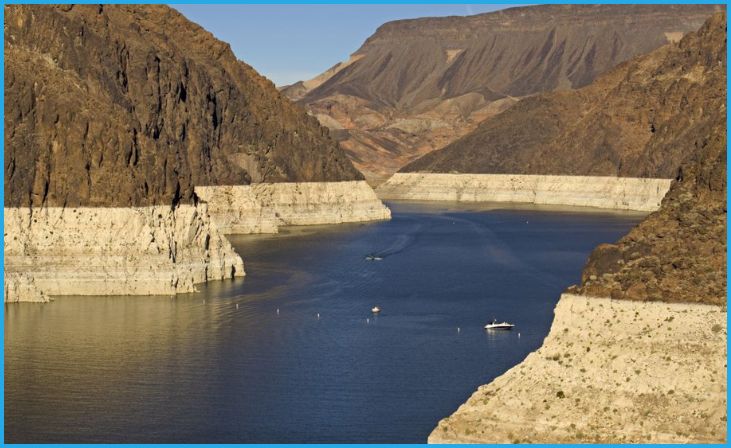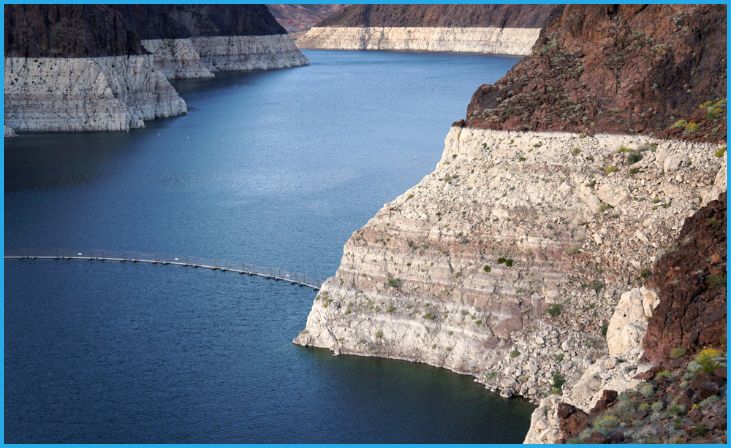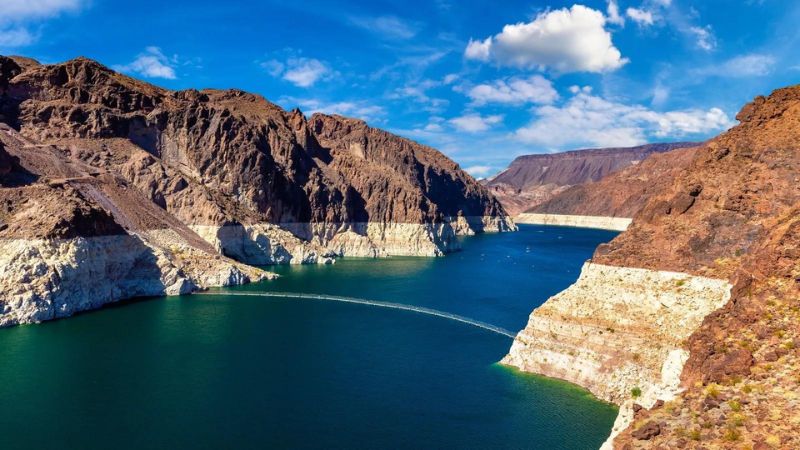In the heart of the southwestern United States lies Lake Mead, a critical reservoir formed by the Hoover Dam on the Colorado River. Its waters not only quench the thirst of millions but also power turbines generating electricity for countless homes and businesses. However, recent trends in water levels have set off alarm bells, indicating a rate of change unseen in years.
Understanding the Importance of Lake Mead
Lake Mead isn’t just a body of water; it’s a lifeline for the region. Serving as the largest reservoir in the United States, it supplies water to over 20 million people in Nevada, Arizona, California, and Mexico. Additionally, it plays a crucial role in generating hydroelectric power, contributing to the energy needs of the southwestern states. Given its significance, any fluctuation in its water levels warrants close attention.
The Factors Behind the Fluctuations

Several interconnected factors contribute to the fluctuating water levels of Lake Mead. Climate change, prolonged droughts, increased water consumption, and inefficient water management practices all play a part in the current scenario. Over the years, rising temperatures and changing precipitation patterns have exacerbated the aridity of the region, leading to decreased inflows into the reservoir. At the same time, the ever-growing demand for water, particularly in urban areas, has put additional strain on this precious resource.
Unprecedented Rate of Change
What sets the current situation apart is the unprecedented rate at which Lake Mead’s water levels are declining. While fluctuations are not uncommon, the speed at which the reservoir is shrinking is alarming. According to recent data, the water levels have reached historic lows, prompting concerns about the sustainability of water supply and energy generation in the region. The rate of decline observed in recent years surpasses anything seen in decades, posing significant challenges for water managers and policymakers.
Implications for Water Supply and Energy Generation
The dwindling water levels of Lake Mead have far-reaching consequences for both water supply and energy generation. As the primary water source for millions of people and agriculture in the region, any reduction in the reservoir’s capacity can lead to water shortages, impacting communities, businesses, and ecosystems alike. Furthermore, the decreased water levels limit the Hoover Dam’s ability to generate electricity efficiently, potentially affecting the stability of the regional power grid.
Challenges and Opportunities
Addressing the challenges posed by the rapidly declining water levels of Lake Mead requires a multifaceted approach. Sustainable water management practices, including conservation efforts, improved infrastructure, and innovative technologies, are crucial for mitigating the impacts of drought and ensuring the long-term viability of water resources in the region. Additionally, fostering collaboration among stakeholders, including government agencies, water utilities, and the public, is essential for implementing effective solutions and adapting to changing environmental conditions.
The Role of Policy and Innovation
Policy plays a pivotal role in shaping the future of water management in the southwestern United States. By enacting regulations that promote water conservation, incentivize efficiency improvements, and support alternative water sources, policymakers can help mitigate the effects of drought and ensure equitable access to water resources. Furthermore, investing in research and innovation can unlock new solutions for water scarcity, from desalination technologies to sustainable agricultural practices.
Looking Ahead

While the current challenges facing Lake Mead are daunting, they also present opportunities for innovation, collaboration, and resilience. By acknowledging the interconnected nature of water, energy, and climate issues, stakeholders can work together to develop holistic solutions that address the root causes of water scarcity and build a more sustainable future for the region. By taking decisive action now, we can safeguard the health and prosperity of communities reliant on Lake Mead for generations to come.
Conclusion
The rapid change in Lake Mead’s water levels represents a stark reminder of the urgent need to address the complex challenges of water management in the face of climate change and increasing demand. By recognizing the importance of this critical resource and embracing innovative solutions, we can navigate the current crisis and build a more resilient and sustainable future for the southwestern United States. As the water levels continue to fluctuate, proactive measures and collaborative efforts will be essential in ensuring the continued vitality of Lake Mead and the communities it serves.
